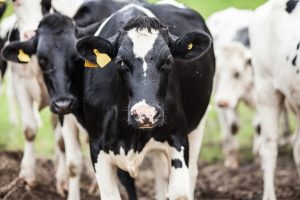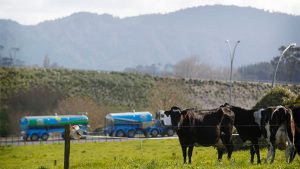
Fonterra may be forced to reduce its forecast milk payment to farmers for this season as weak Chinese demand continues to pull down dairy prices.
China, Fonterra’s largest market, has reported weaker economic growth for the spring than forecast after the country failed to rebound as strongly as expected following the removal of Covid restrictions.
The lacklustre demand has weighed on global dairy prices, with the benchmark global dairy trade index last week falling to its lowest level since November 2020, prompting traders and economists to reassess their expectations for milk payments this season.
Prices on the SGX-NZX futures market have retreated quickly over the past month, with traders now betting Fonterra will pay farmers $7.60 per kilogram of milk solids for the current 2023/24 season.
That’s below the midpoint of Fonterra’s $8 per kgMS opening forecast for this season made in May, but within the co-operative’s forecast range for the season of $7.25 to $8.75 per kgMS.
At the time of the forecast, Fonterra chief executive Miles Hurrell said he expected Chinese demand to start returning to normal towards the end of this calendar year.
HighGround Dairy global dairy consultant Stuart Davison said he expects Fonterra to reduce its forecast following the decline in global prices, and he’s not alone.
ANZ cut its milk price forecast by 50 cents to $7.75 per kgMS following last week’s global dairy trade auction, noting prices had deteriorated at a quicker pace than anticipated.
ASB expects Fonterra to pay $7.25 per kgMS, while BNZ expects $7.60 per kgMS.
Of those who are betting on higher payouts, Rabobank expects $8.20 per kgMS, while Westpac said its $8.90 per kgMS forecast was under review.
“Global demand for dairy products has been impacted by deteriorating economic conditions affecting consumer demand, particularly in China,” ANZ agricultural economist Susan Kilsby said in a note following the latest global dairy auction.
“Prices have continued to decline in recent months, and it now appears that prices will not materially increase before a large proportion of the current season’s supply is traded.”
Kilsby said it was difficult to know exactly for how long prices would recede.
“What is clear is that consumer demand is being impacted by weaker economic conditions in many regions,” she said.
“The softer demand from China is having the largest impact, as China is by far the world’s largest importer of dairy product. This market is expected to remain relatively weak for some time yet, but as milk supplies tighten, prices are expected to improve later in the season.”
Westpac senior agri economist Nathan Penny said the downward price trend had been sustained much longer than he had anticipated, noting overall prices had fallen at 10 of the last 14 global dairy trade auctions.
“We had expected that prices would have bottomed by now, if not begun to turn higher,” he said in a note following last week’s auction titled ‘Slippery slope’.
Penny said the chief catalyst for the ongoing price decline was the unexpectedly “sluggish” Chinese economy, noting Westpac had made significant cuts to its forecasts for Chinese economic growth this year.
Factoring in those downgrades and the ongoing dairy price weakness signalled clear downside risks to Westpac’s milk price forecast, he said.
As the country’s biggest milk processor, Fonterra’s milk payment is closely watched and sets the benchmark for other companies.
A lower milk price would put further pressure on dairy farmers, many of whom may struggle to break even due to high farm inflation.
Stats NZ data shows dairy farm expenses jumped an annual 13% in the March quarter as interest costs doubled, and fertiliser and feed costs jumped 11%.
























